Why is Arts Council England so woke?
Part 2 of Woke Waste: How ACE allocates hundreds of millions in public funding
In recent times, I can’t help thinking that the public mood is turning against Arts Council England (ACE) as more and more people realise its woke ways.
To clarify; I don’t think ACE is awful per se. It funds wonderful projects and theatres, such as Sadler’s Wells, which has long been a favourite in my family.
But the problem is the divisive guff that comes alongside the high-quality content. Mountains of it, in fact.
Take for instance Soho Theatre, which receives £614,582 in annual funding from ACE and is currently hosting the Femmes of Colour (FOC) Comedy Club, where “White audience members are encouraged to check their privilege at the door”.
Another of its shows is 52 Monologues for Young Transsexuals, “a raucous and unapologetic speed-drive through transfeminine experience.” Here’s an idea of what this looks like below:
Then there’s the Southbank Centre. Receiving almost £17 million in annual funding from ACE, it recently treated audiences to shows including: The Faggots and Their Friends Between Revolutions, an “unforgettable celebration of queer activism”, and “a [children’s] tour around the human body with trans non-binary emergency doctor and TV presenter Dr Ronx”. (You can read more about the Southbank Centre’s events in my recent Telegraph piece here.)
You may wonder why the public are being subjected such hyper-woke shows - which also aren’t very good (check out some of the footage from FOC if you don’t believe me) - and even worse, paying for the privilege. For 2023-2026, ACE has been awarded a whopping £445 million in public funds.
Still, you always hear that the arts industry is on its knees. Could it be that people don’t want to be told to check their “white privilege” at a night meant to make them laugh? Or have their children given biology lessons by someone who thinks you can change gender to be two genders (seriously, what on earth is “trans non-binary”?). It’s enough to make you want to relocate to the Isles of Scilly or Asparagus Island (this does actually exist); anything to escape sermons from our Progressive Overlords.
Driving this madness is ACE, which essentially incentivises woke ideology through its “Four Investment Principles”. These ask artists to show their commitment to “Environmental Responsibility” and “Inclusivity & Relevance” to get funding (alongside the equally wishy-washy ideals of “Ambition & Quality” and “Dynamism”).
In its Investment Principles Resource Hub, ACE warns: “We think the best creative and cultural practice embodies all four principles, and if you’re applying for our funding we’ll be interested to know how you’re embedding them in your project or organisation.” Nudge nudge!
Below is some information on ACE’s Environmental Responsibility principle:
For Wokies (the sorts who call themselves “liberals” but seem to more permanently offended than Saudi clerics these days), the idea that “Environmental Responsibility” is a contentious requirement for investment is basically inconceivable. “Why wouldn’t you want to show you care about the environment?!” You can imagine them saying.
But why is it up to artists to “promote the need for environmental responsibility in the communities [they] work with” - any more than ensuring that they help reduce knife crime in an area, or call outs to social services?
I doubt anyone at ACE is expecting a ballerina to include a report about carbon capture along in their funding application. Mostly these requirements are designed to embed progressive politics and terminology (such as “climate crisis”) into art, to indoctrinate audiences into woke ideology.
Next up we have “Inclusivity & Relevance”.
It feels controversial to say now, but I always thought the arts was quite naturally diverse. Most would agree the biggest problem is class. Think Made in Chelsea’s Jamie Laing, who was the subject of serious backlash last week for having been made a Radio 1 presenter - which people took as evidence of how the privileged find it easier to make it in the arts (Laing later assured the British public he’s not “just a posh idiot”.)
As far as ACE is concerned, class is just the start of barriers to the arts. It offers artists and organisations huge amounts of educational material on diversity matters (even though, paradoxically, they may also be “marginalised” and the exact people ACE wants to apply for funding).
I don’t even know where to start with all the websites and content listed on ACE’s “Investment Principles Resources Hub”; let’s just say, one day reading it made me feel like I’d completed a PhD (and needed to take a year off).
ACE links to a total of 40 organisations “on hand” to help artists “embed the Investment Principles”, with inspiring names such as the National Rural Touring Forum.
One of ACE’s most trusted diversity experts is Creative Visual Arts Network England. It has useful information for artists, such as: “It's through that space of being together that we can make cultural change. As Shades of Noir affirms, we need to quite literally centre the lens of intersection in our approaches to removing barriers to access. (14) Recognising the lived experience and expertise of those who experience multiple layers of barriers helps co-create better working conditions in the visual arts sector.”
Makes a lot of sense…
Here’s the whole spiel:
When artists are done reading, they can also get cracking on this toolkit:
It contains 14 slides “to cultivate a visual arts sector and ecology that supports its leadership and enables artists and arts workers from marginalised and underrepresented communities to thrive”.
and has a load of questions to fill out like this:
“The Fostering Equity in the Visual Arts report (mentioned above) outlines that we should assist artists and arts workers to challenge assumptions that they need to be dependent on institutions to sustain and/or build a career. With this in mind, can you think of support systems for artists and arts workers from marginalised and underrepresented communities that your organisation can implement, and that could also go beyond your organisation?”
So not only are artists expected to explain how they will help solve climate change, but also explain how they’re “Creating an uplift in working conditions for artists and arts workers from marginalised and underrepresented communities will benefit everyone working in the visual arts sector” among countless other gobbledygook requirements.
You could easily end up feeling sorry artists - understanding why they say they’re non-binary and putting on a show about a dancer who wants to translate their moves into renewable energy (I really did see this) - but so many seem to be caught up in the woke madness too.
With all of these principles and resources, it does seem extraordinary that the end goal is entertainment…





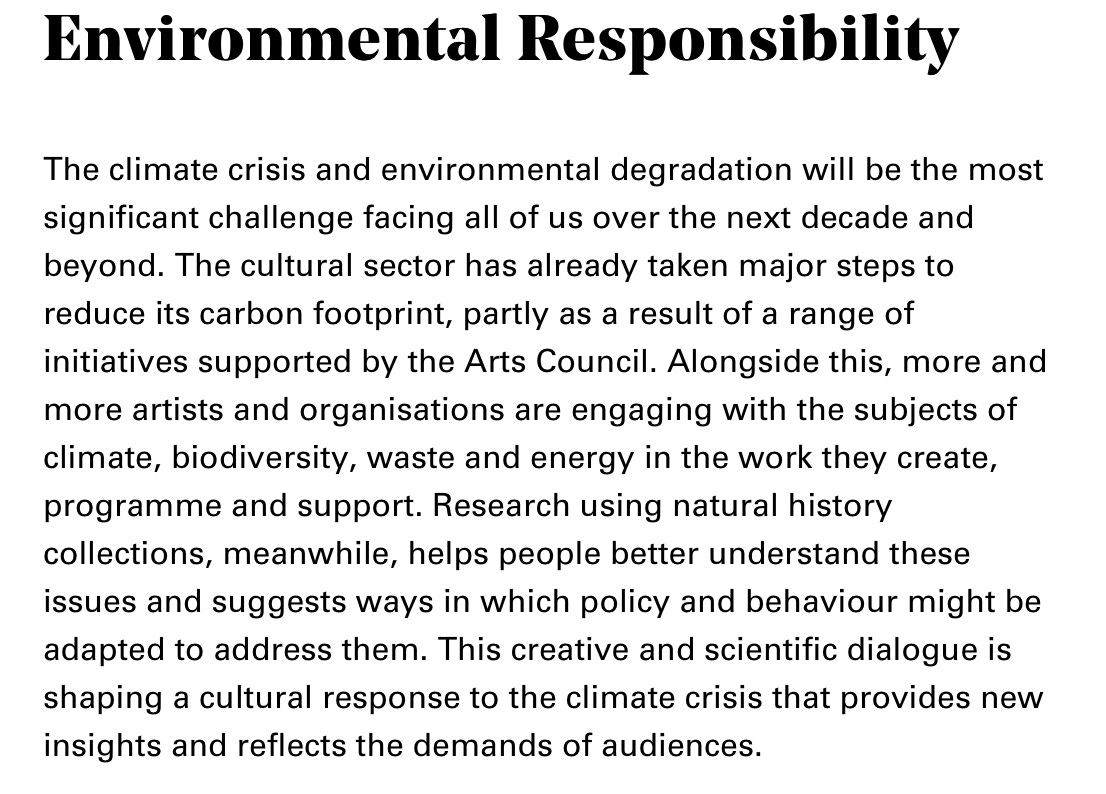
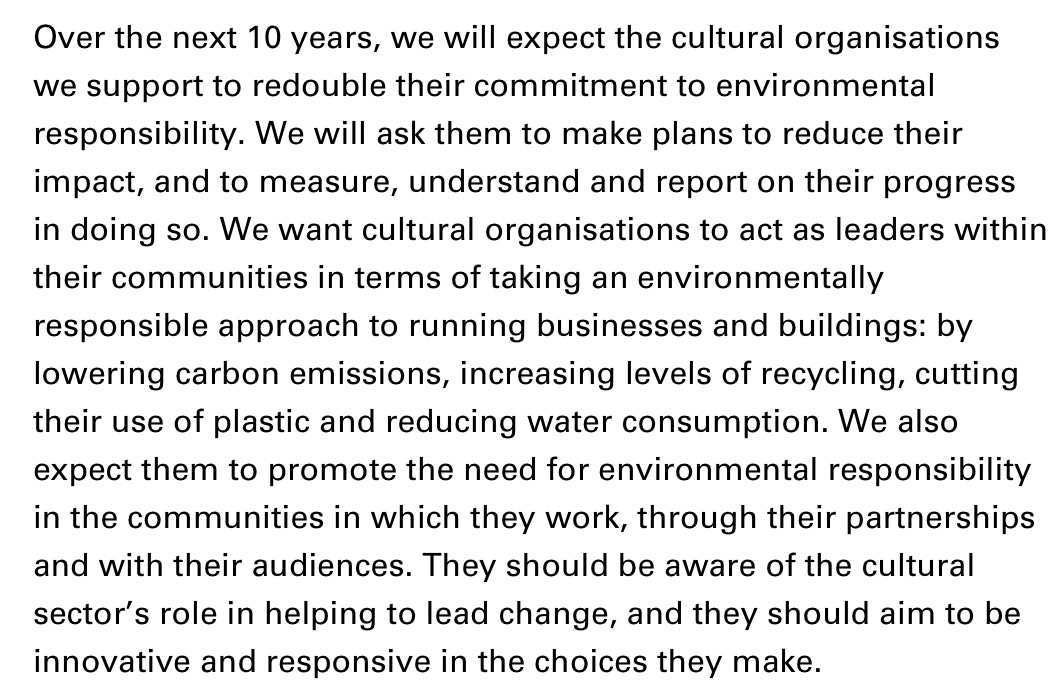
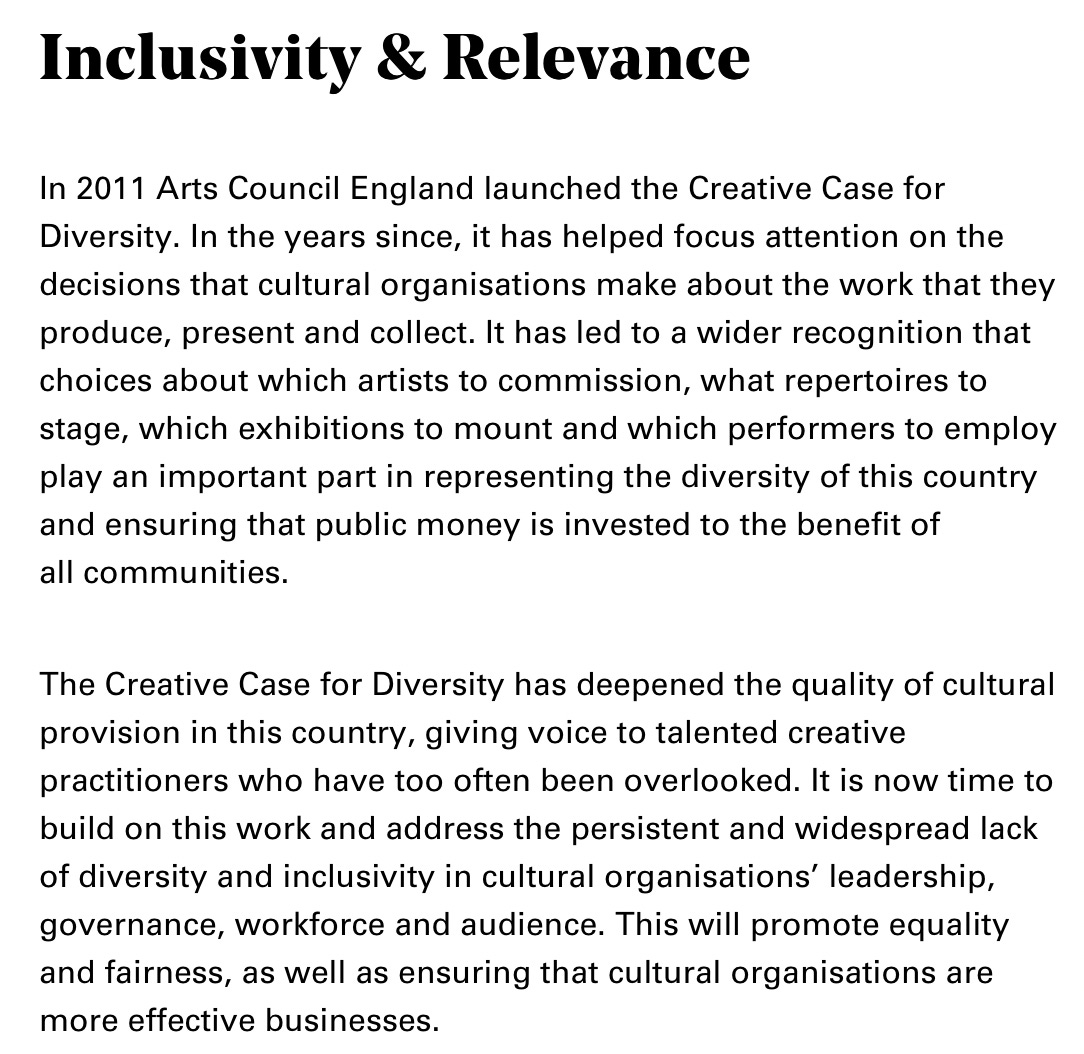
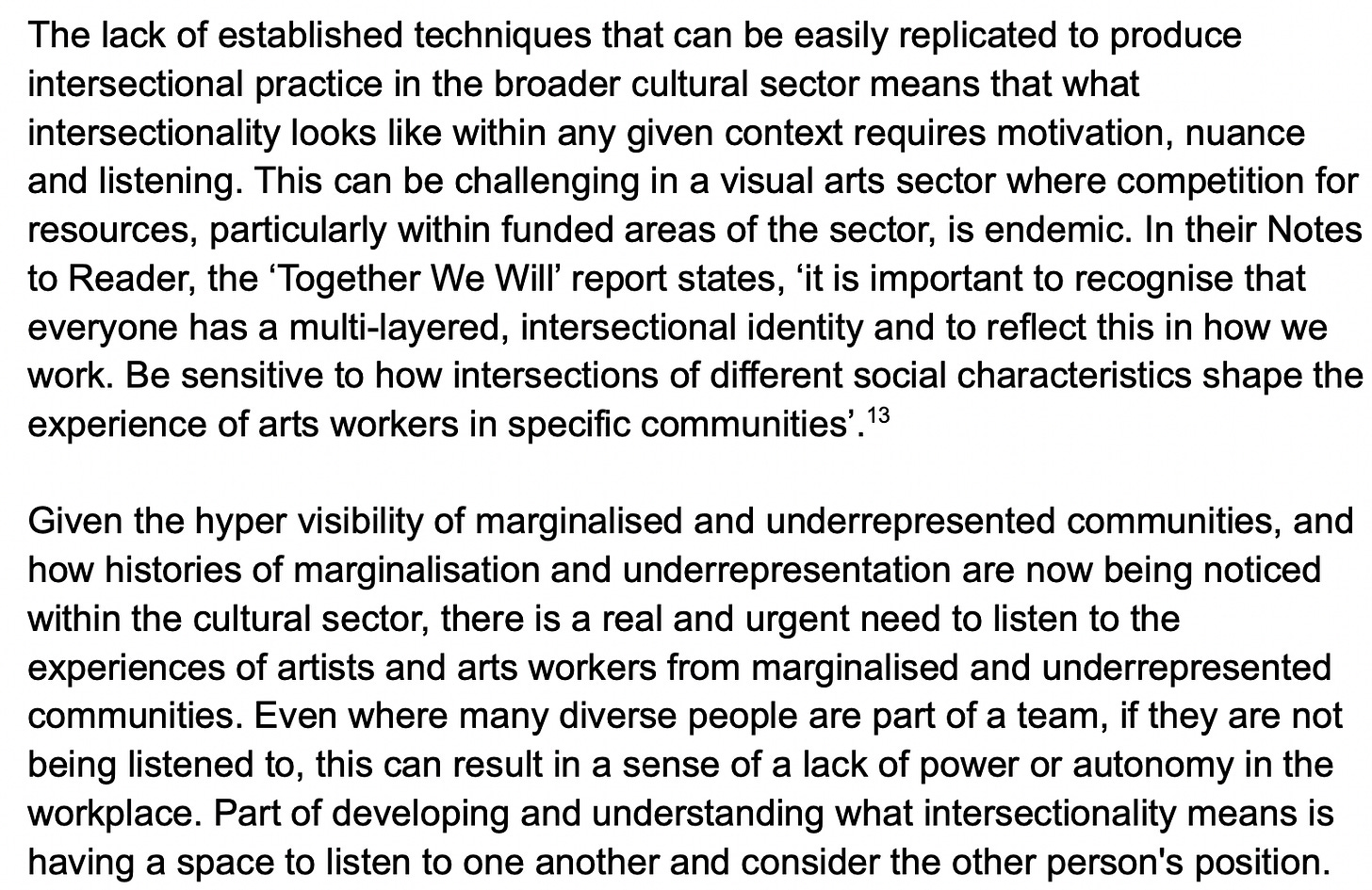
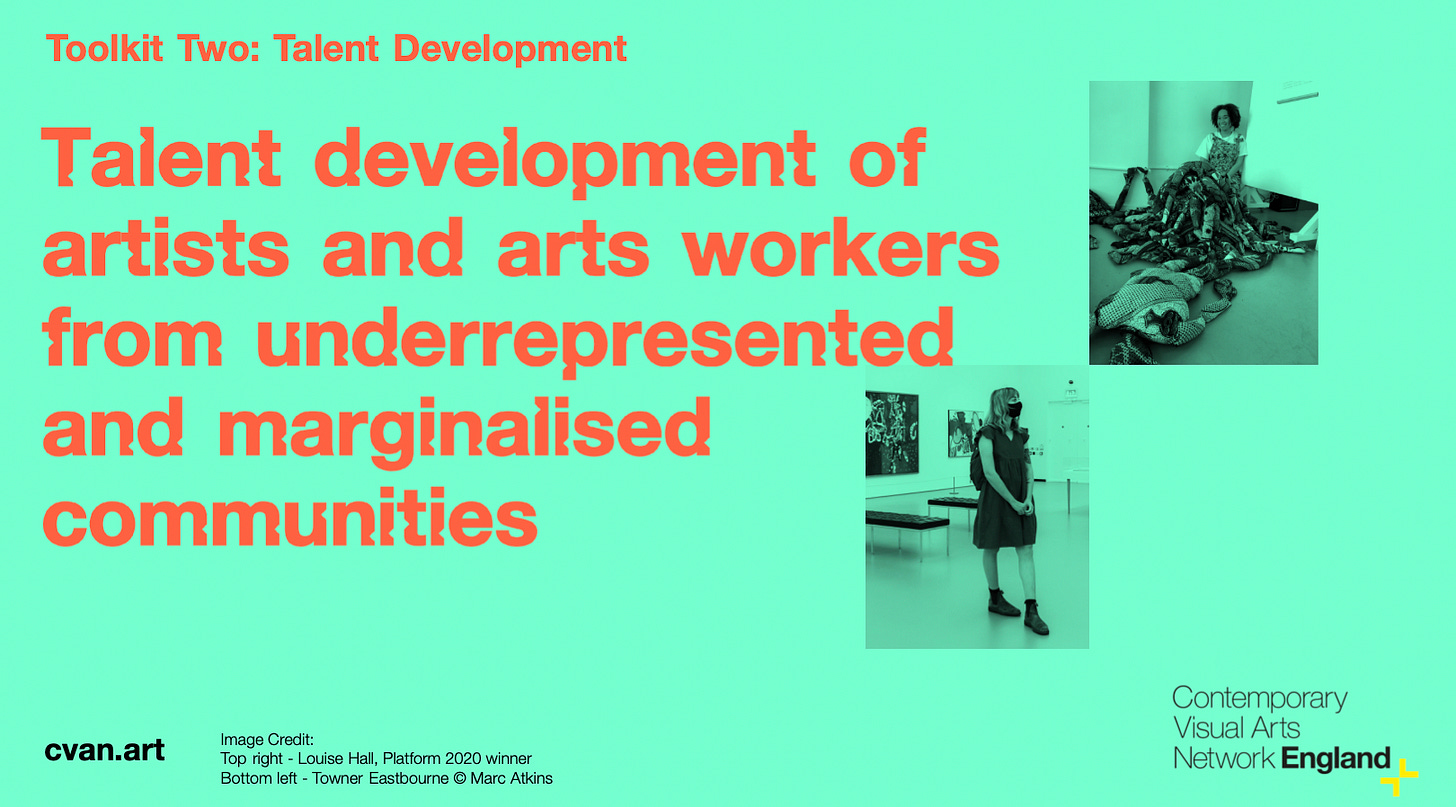
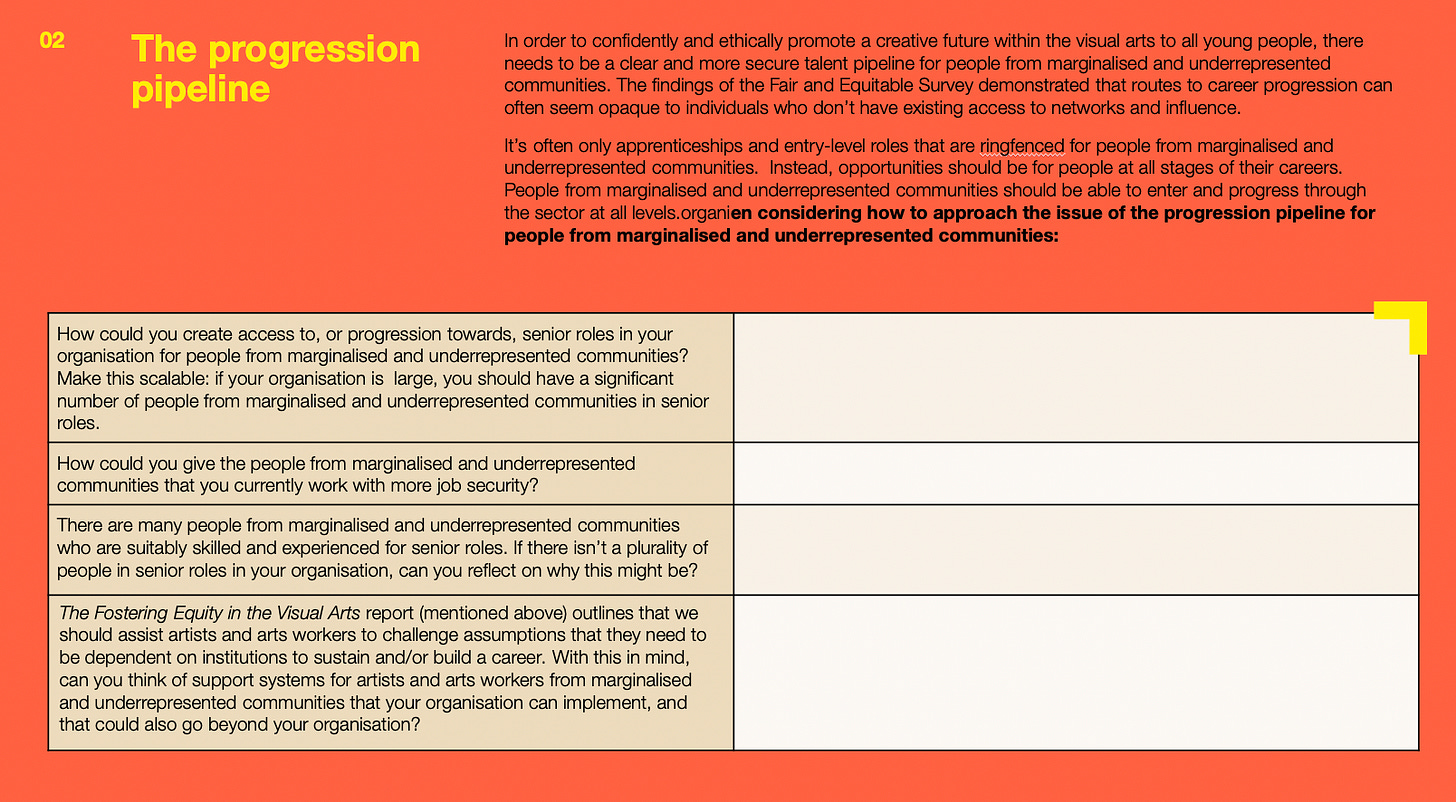
A long-ex gf of mine is now a 'queer performance artist' who received ACE funding. I wondered why her website was blathering on about climate change and centring disabled and non-disabled experiences (or something)... Now I know!
Complaints about the arts council can and must be made here, https://www.ombudsman.org.uk/